Blog & Latest Updates
Fly Fishing Articles
Insects by Common Name


> > The Delaware River
Landscape & scenery photos from the Delaware River
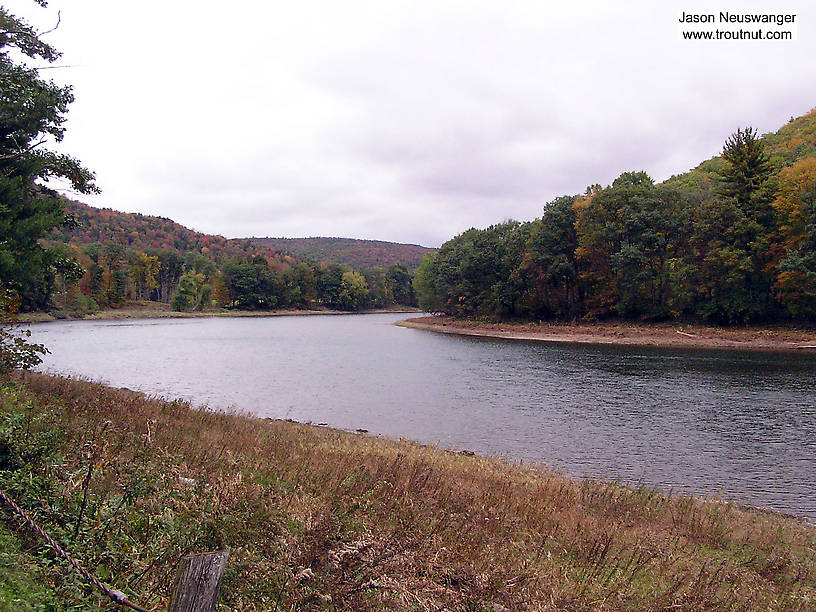
StateNew York
LocationDelaware River
Date TakenOct 10, 2004
Date AddedJan 18, 2006
AuthorTroutnut
CameraOlympus C740UZ
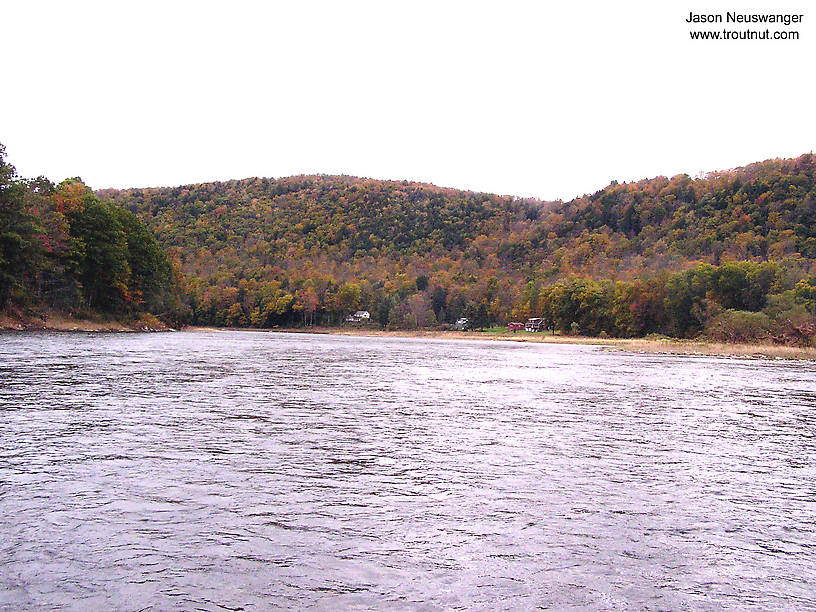
StateNew York
LocationDelaware River
Date TakenOct 10, 2004
Date AddedJan 18, 2006
AuthorTroutnut
CameraOlympus C740UZ
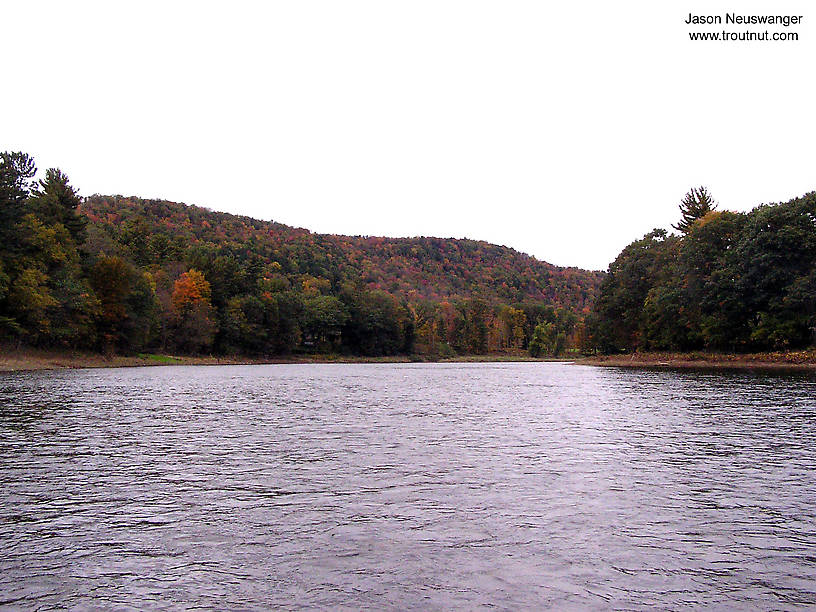
StateNew York
LocationDelaware River
Date TakenOct 10, 2004
Date AddedJan 18, 2006
AuthorTroutnut
CameraOlympus C740UZ
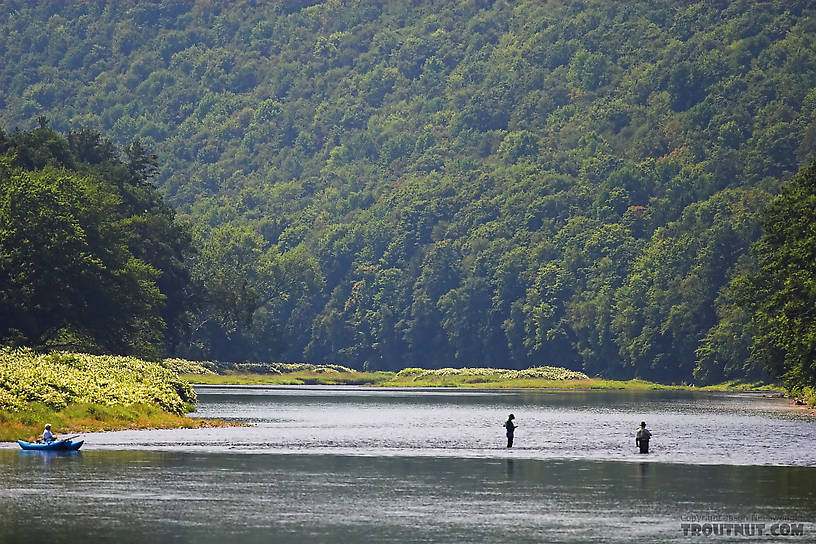
Several anglers fish the tail of a famous pool, loomed over by a Catskill mountain.
StateNew York
LocationDelaware River, Junction Pool
Date TakenSep 2, 2005
Date AddedFeb 8, 2006
AuthorTroutnut
CameraCanon EOS 20D
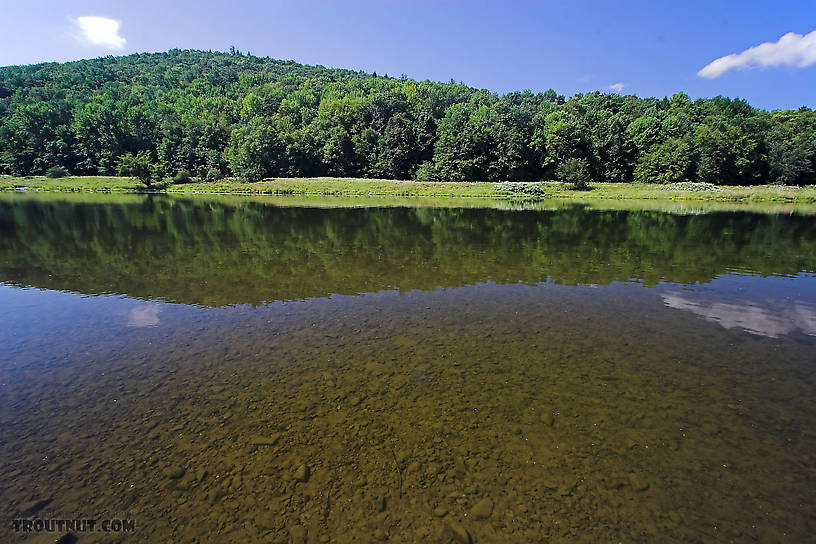
StateNew York
LocationDelaware River, Junction Pool
Date TakenSep 2, 2005
Date AddedFeb 8, 2006
AuthorTroutnut
CameraCanon EOS 20D
Closeup insects from the Delaware River
Penelomax septentrionalis Mayfly Nymph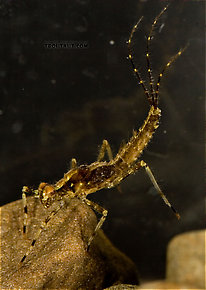 View 12 PicturesThis is surely the most distinctive-looking species in Ephemerellidae. I like the rugged, spindly look. If mayflies made movies, Penelomax septentrionalis would probably play the supervillain.
View 12 PicturesThis is surely the most distinctive-looking species in Ephemerellidae. I like the rugged, spindly look. If mayflies made movies, Penelomax septentrionalis would probably play the supervillain.
Maybe I should take a break and get something to eat.
 View 12 PicturesThis is surely the most distinctive-looking species in Ephemerellidae. I like the rugged, spindly look. If mayflies made movies, Penelomax septentrionalis would probably play the supervillain.
View 12 PicturesThis is surely the most distinctive-looking species in Ephemerellidae. I like the rugged, spindly look. If mayflies made movies, Penelomax septentrionalis would probably play the supervillain.Maybe I should take a break and get something to eat.
Collected May 13, 2007 from the Delaware River in New York
Added to Troutnut.com by Troutnut on May 18, 2007
Added to Troutnut.com by Troutnut on May 18, 2007
Siphlonurus quebecensis (Gray Drake) Mayfly Nymph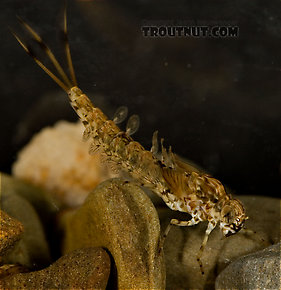 View 9 Pictures
View 9 Pictures
 View 9 Pictures
View 9 PicturesCollected May 13, 2007 from the Delaware River in New York
Added to Troutnut.com by Troutnut on May 18, 2007
Added to Troutnut.com by Troutnut on May 18, 2007
Hydropsyche (Spotted Sedges) Caddisfly Pupa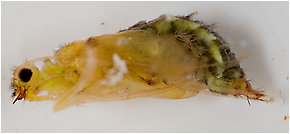 View 8 PicturesSeveral users have interesting comments in the discussion of this specimen, but this observation by Creno is especially good:
View 8 PicturesSeveral users have interesting comments in the discussion of this specimen, but this observation by Creno is especially good:
 View 8 PicturesSeveral users have interesting comments in the discussion of this specimen, but this observation by Creno is especially good:
View 8 PicturesSeveral users have interesting comments in the discussion of this specimen, but this observation by Creno is especially good:Also, this is what I would call an "immature" pupa. The wingpads of caddis pupae darken to nearly black as the enclosed adults near emerging. The darkening is the developing adult wing inside the pupal wing pad (Wing pad: A protrusion from the thorax of an insect nymph which holds the developing wings. Black wing pads usually indicate that the nymph is nearly ready to emerge into an adult.). The ultimate coloration of the adult wing is not very apparent in most pupal wing pads (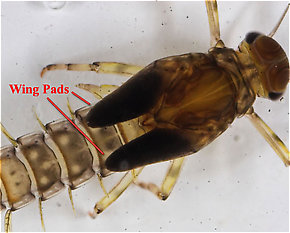 The wing pads on this final instar Baetidae mayfly nymph are extremely dark.Wing pad: A protrusion from the thorax of an insect nymph which holds the developing wings. Black wing pads usually indicate that the nymph is nearly ready to emerge into an adult.) as the majority of the adult wing coloration comes from the color/position of the adult wing hairs and setae (Seta: Little hairs on insects.). But dark pupal wingpads are a good indication that the emergence will occur very soon, likely that day or so, and that the adult parts are sufficiently developed within the pupae to make a species determination from the specimen, particularly if it is a male.
The wing pads on this final instar Baetidae mayfly nymph are extremely dark.Wing pad: A protrusion from the thorax of an insect nymph which holds the developing wings. Black wing pads usually indicate that the nymph is nearly ready to emerge into an adult.) as the majority of the adult wing coloration comes from the color/position of the adult wing hairs and setae (Seta: Little hairs on insects.). But dark pupal wingpads are a good indication that the emergence will occur very soon, likely that day or so, and that the adult parts are sufficiently developed within the pupae to make a species determination from the specimen, particularly if it is a male. The wing pads on this final instar Baetidae mayfly nymph are extremely dark.
The wing pads on this final instar Baetidae mayfly nymph are extremely dark.
Collected May 13, 2007 from the Delaware River in New York
Added to Troutnut.com by Troutnut on May 18, 2007
Added to Troutnut.com by Troutnut on May 18, 2007
Sweltsa (Sallflies) Stonefly Nymph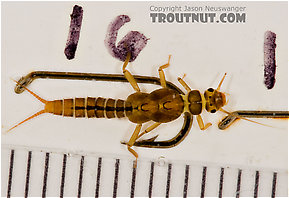 View 6 Pictures
View 6 Pictures
 View 6 Pictures
View 6 PicturesCollected May 13, 2007 from the Delaware River in New York
Added to Troutnut.com by Troutnut on May 18, 2007
Added to Troutnut.com by Troutnut on May 18, 2007
Lepidostoma (Little Brown Sedges) Little Brown Sedge Larva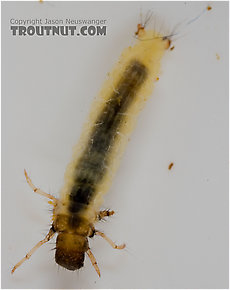 View 6 Pictures
View 6 Pictures
 View 6 Pictures
View 6 PicturesCollected May 13, 2007 from the Delaware River in New York
Added to Troutnut.com by Troutnut on May 18, 2007
Added to Troutnut.com by Troutnut on May 18, 2007
Recent Discussions of the Delaware River
shad run/ Delaware and tribs 3 Replies »
at risk of offending the purists... can anybody help me with timing the shad run on Delaware and/or tribs? I will want to wade so has to be upper reaches I guess. I am told lower Neversink has a healthy shad run? and while I am asking, does the striper spawn more or less coincide? is there a time of year when one is likely to catch shad/stripers/trout all on a fly? I have caught smallmouth/juvenile stripers/trout in same stream/same day once before (Croton River); but I am told there is no longer a viable shad run there, as several years ago they cut off all flow from the dam upstream.
ReplyDelaware 2 Replies »Any suggestions as to what might be effective on the Delaware right now?
ReplyStart a Discussion of the Delaware River:
Top 10 Fly Hatches
Top Gift Shop Designs
Eat mayflies.
Top Insect Specimens
Miscellaneous Sites
Troutnut.com is copyright © 2004-2024 Jason
Neuswanger (email Jason). See my FAQ for information about use of my images.
 privacy policy
privacy policy
